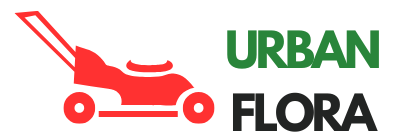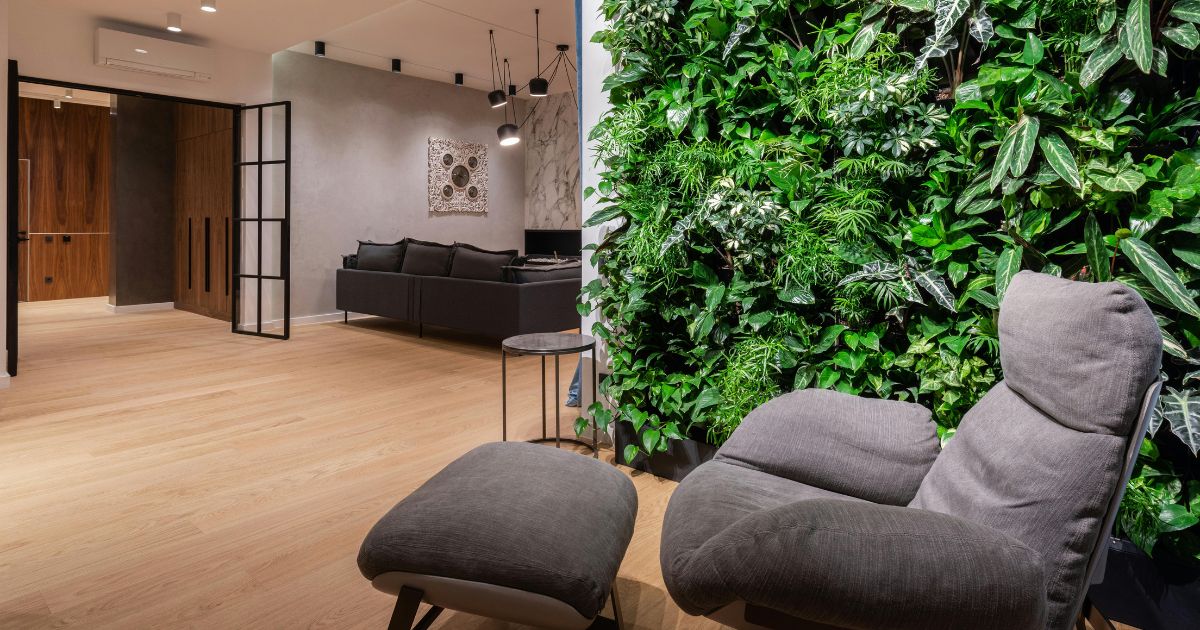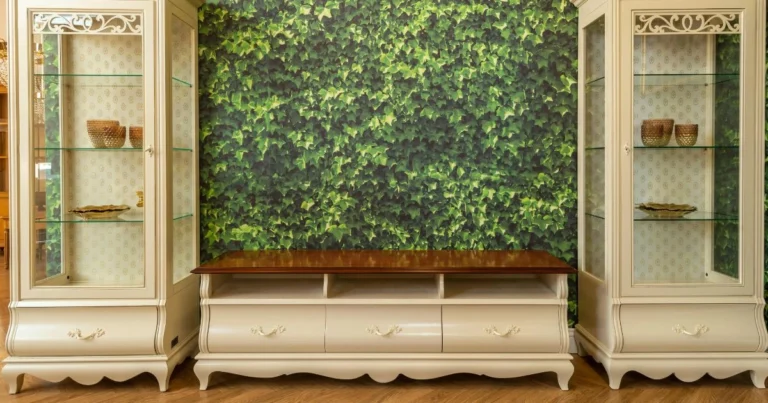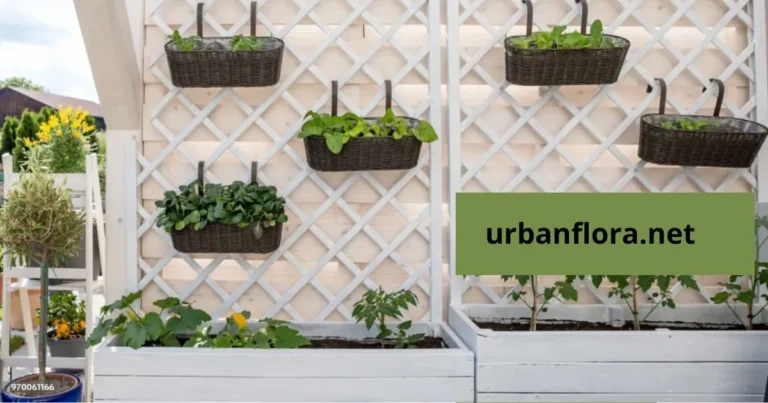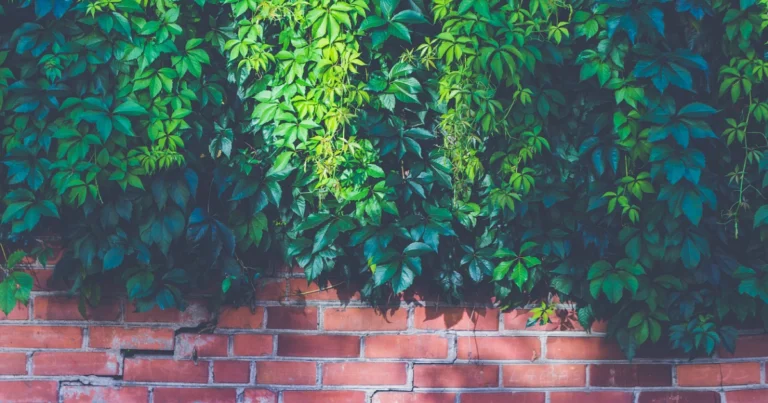Vertical Garden Tips: Choosing the Best Wall Planter in 2025
Table of Contents
How to Choose the Best Wall Planter for Your Vertical Garden
Choosing the right wall planter for your vertical garden can be tough with so many options. You want a lush, green space that uses your wall space well. Vertical planters are a great choice for this.
They bring life to your walls. Knowing the basics of vertical gardening helps you make a good choice.
When picking a wall planter, think about the type, material, size, and plants you want. Vertical garden planters come in many styles. The appropriate choice depends on your requirements.
By looking at these factors, you can make a vertical garden that looks great and adds to your space.
Key Takeaways
- Vertical planters are a great way to maximize space and create a lush environment.
- Understanding the basics of vertical gardening is crucial for making an informed decision.
- Consider the type of vertical garden planter, its material, and size when making a selection.
- Choose plants that thrive in vertical planters and require minimal maintenance.
- Vertical garden planters offer a versatile way to bring life to your walls and enhance your space.
- Research and planning are essential for creating a successful vertical garden.
- By selecting the right wall planter, you can enjoy the benefits of a beautiful and thriving vertical garden.
Understanding Wall Planter Vertical Garden Systems
Creating a thriving vertical garden starts with understanding the systems and parts involved. You’ll need to pick the right planters, like stackable ones, for flexibility. Stacking planters also save space and add a unique touch.
A good vertical garden system has a few key parts. These include a growing medium, an irrigation system, and sometimes a trellis for support. Wall-mounted planters save space, look great, and improve air quality. With the right parts and design, you can make a beautiful, thriving garden.
Basic Components of Vertical Gardens
Some key parts of vertical gardens are:
- Planters: like stackable or stacking ones
- Growing medium: such as soil or a mix without soil
- Irrigation system: like drip irrigation or a watering can
- Trellis system: for support and to help plants grow up
Benefits of Wall Mounted Planters
Wall-mounted planters have many benefits, including:
- Space-saving: great for small spaces or cities
- Aesthetic appeal: they add beauty and interest
- Improved air quality: plants clean the air and make it better
Types of Wall Planters Available Today
Choosing the right wall planter is key for a vertical garden. There are many options, from simple to complex designs. The ideal choice depends on your preferences, available space, and personal style.
Some popular types of wall planters include:
- Plastic wall planters: lightweight, easy to clean, and affordable
- Metal wall planters: durable, modern, and can be made from recycled materials
- Wooden wall planters: natural, rustic, and can add a touch of warmth to your space
These vertical garden planters vary in shape, size, and material. They let you create a unique and thriving vertical garden. Whether for your home, office, or outdoor space, there’s a planter for you.
By picking the right vertical garden planters, you get many benefits. These include better air quality, more oxygen, and a natural look.
“A thoughtfully designed vertical garden can enhance air quality, elevate the visual appeal of your space, and promote a sense of tranquility and well-being.”
When looking at vertical garden planters, think about durability, weather resistance, and upkeep. The right planter makes your vertical garden stunning and thriving. It brings joy and charm to your surroundings.
Essential Factors to Consider When Selecting Your Wall Planter
Choosing the right wall planter is key to a healthy plant environment. Vertical planters need special attention due to their design. Think about the material’s durability and weather resistance, as well as the size and weight.
The material’s durability is crucial for outdoor planters. They must handle different weather conditions. Weather-resistant materials can make your planter last longer. The size and weight are also important for looks and to avoid overwhelming the wall. Key factors to keep in mind include:
- Material durability and weather resistance
- Size and weight considerations
- Mounting system requirements
- Water management features
Vertical planters need a strong mounting system to stay on the wall. Features like built-in water reservoirs or drainage systems are important for plant health. By thinking about these factors, you can pick the best wall planter for your vertical garden.
| Factor | Considerations |
| Material | Weather resistance, durability |
| Size and Weight | Aesthetics, wall support |
| Mounting System | Sturdiness, wall type |
| Water Management | Plant health, maintenance |
Matching Wall Planters to Your Available Space
Choosing the right wall planter is key, especially when it comes to space. Whether you have a small balcony or a large patio, there’s a planter for you. Stackable planters are great for small spaces because they’re easy to add or remove.
To find the perfect planter, measure your space and think about the plants you want. This will guide you in selecting the appropriate size and style. Consider things like sunlight, plant type, and your space’s style.
- The amount of sunlight your space receives
- The kinds of plants you wish to grow
- The style and design of your space
By thinking about these, you can pick a planter that fits your space well. Stackable planters are perfect for small areas because they’re flexible.
Don’t forget about the planter’s weight and durability. Also, think about any extra features you might need. With the right planter, you can make a beautiful vertical garden that adds to your space.
Understanding Weight Capacity and Structural Requirements
When you’re setting up vertical garden planters, it’s key to think about the wall’s weight capacity and the planter’s structure. You need to check the wall type, like concrete, brick, or wood. Also, consider the planter’s weight when it’s full of soil and plants. This is because vertical garden planters are big and heavy, needing careful planning for a safe setup.
To figure out your wall’s weight limit, look at the wall type and the fasteners you’ll use. For instance, concrete walls can hold more than wood walls. Remember, the planter’s weight, plus the soil and plants, matters too. Pick a planter that fits your wall and the plants you plan to grow.
Wall Assessment Guidelines
Before you start, check your wall’s weight capacity. Think about these points:
- Type of wall: concrete, brick, wood, or other
- Weight of the planter: empty and filled with soil and plants
- Type of fasteners: screws, nails, or adhesive strips
Support System Options
Choose a support system that matches your wall and planter’s weight. Here are some choices:
- Screws: for concrete or brick walls
- Nails: for wood walls
- Adhesive strips: for lightweight planters
Load Distribution Techniques
To make sure the planter is safely attached, use load distribution methods. These include:
- Multiple support points: to spread the planter’s weight
- Leveling: to keep the planter straight and even
| Wall Type | Weight Capacity | Support System |
| Concrete | High | Screws |
| Brick | Medium | Nails |
| Wood | Low | Adhesive strips |
Soil and Irrigation Considerations for Vertical Planters
Creating a thriving environment for your plants in vertical planters requires careful thought on soil and irrigation. It’s important to find the right balance between water retention and drainage. This balance helps prevent waterlogged soil and root rot.
Choosing the right soil is key. It should hold moisture but also drain excess water. This ensures your plants receive the proper amount of water.
Vertical planters often need special irrigation systems because of their vertical design. This can cause water to pool at the bottom, harming your plants. You might choose a simple manual system or a more complex automated one, depending on your needs.
When picking an irrigation system, consider a few things:
- Water distribution: making sure water reaches all plants evenly
- Drainage: stopping water from pooling at the bottom of the planter
- Moisture levels: keeping an eye on soil moisture to avoid too much or too little water
By understanding these points and picking the right soil and irrigation, you’ll create a thriving vertical garden. Research and choose a system that fits your needs and budget. If you’re unsure, don’t hesitate to ask gardening experts for advice.
Best Plants for Your Wall Planter System
Choosing the right plants for your wall planter system is exciting. With stackable planters, you can mix and match plants to match your style. You can try out different plants, from those that don’t need much water to those that bloom or are edible.
Succulents and herbs are great for places with little rain or water. For color, add flowering plants like petunias or geraniums. For a tasty harvest, edible plants like strawberries or leafy greens are perfect.
Drought-Resistant Options
- Succulents (e.g., aloe, agave, echeveria)
- Cacti (e.g., prickly pear, Christmas cactus)
- Drought-tolerant herbs (e.g., rosemary, thyme, oregano)
Flowering Plant Selections
- Petunias
- Geraniums
- Begonias
Edible Plant Choices
- Strawberries
- Leafy greens (e.g., lettuce, kale, spinach)
- Herbs (e.g., basil, mint, cilantro)
By picking the right plants for your wall planter system, you can make a vibrant vertical garden. It will meet your needs and make your outdoor space better.
| Plant Type | Watering Requirements | Lighting Requirements |
| Succulents | Low | Full sun to partial shade |
| Flowering Plants | Medium to high | Full sun to partial shade |
| Edible Plants | Medium to high | Partial shade to full sun |
Maintenance Tips for Wall Planter Success
To keep your vertical garden planters thriving, it’s key to have a regular maintenance routine. This involves watering, fertilizing, and trimming your plants. Knowing what your plants need and the planter’s conditions will help you create a schedule. This ensures your plants stay healthy and live long.
Vertical garden planters might need more water because of their exposure and how water flows. Regular checks on the planter and its parts can spot problems early. Some important maintenance tasks include:
- Checking the soil moisture levels regularly
- Providing enough nutrients through fertilization
- Pruning plants to keep them in shape and promote growth
- Inspecting the planter for wear and tear
By following these tips, you can enjoy a lush and thriving vertical garden. Your well-maintained vertical garden planters will thank you. Stay on top of your maintenance to keep your wall planter system successful.
| Maintenance Task | Frequency |
| Watering | Regularly, depending on soil moisture levels |
| Fertilizing | Every 1-2 weeks, depending on plant needs |
| Pruning | Every 1-2 months, depending on plant growth |
| Inspection | Every 1-2 weeks, depending on planter condition |
Conclusion: Creating Your Perfect Vertical Garden Space
Creating your dream vertical garden takes careful planning. The right planters can turn any wall into a green paradise. Knowing what makes a vertical garden work and keeping it up is key.
Vertical gardening can do many things, like clean the air or make your home look better. You can even grow your own food. Choose the right planters and plants to make a garden that’s both beautiful and functional.
With some planning and care, your vertical garden will be a source of joy and help the planet. Explore the world of vertical gardening to make your outdoor space amazing.
FAQ
What are the basic components of a vertical garden system?
A vertical garden system has a few key parts. These include planters, growing medium, and an irrigation system. Sometimes, a trellis is needed for support.
What are the benefits of wall-mounted planters?
Wall-mounted planters save space and look good. They also improve the air quality around them.
What are some common vertical garden configurations?
You’ll find living walls, green screens, and modular planters often. These are common ways to set up a vertical garden.
What factors should I consider when selecting a wall planter?
When picking a wall planter, think about its durability and weather resistance. Also, consider the size and weight, the mounting system, and how it handles water.
How do I match wall planters to my available space?
Start by measuring your space and thinking about the plants’ mature size. Stackable planters are great for small areas.
How do I ensure my wall can support the weight of a vertical garden planter?
First, check your wall type and its weight limit. Choose the right support system, like screws or adhesive, based on these factors. Using multiple support points helps keep the planter safe and secure.
What soil and irrigation considerations are important for vertical planters?
The soil needs to hold water but also drain well to avoid root rot. Vertical planters often need special irrigation systems to prevent water pooling.
What are some good plant choices for a wall planter system?
Choose drought-resistant, flowering, or edible plants for your wall planter. Stackable planters let you experiment with different plants.
What maintenance tips are important for wall planter success?
To keep your wall planter thriving, water, fertilize, and prune regularly. Know your plants’ needs and the planter’s conditions to create a good care routine.
